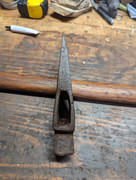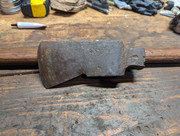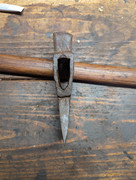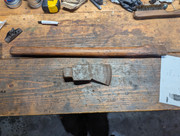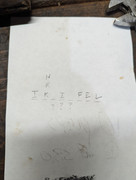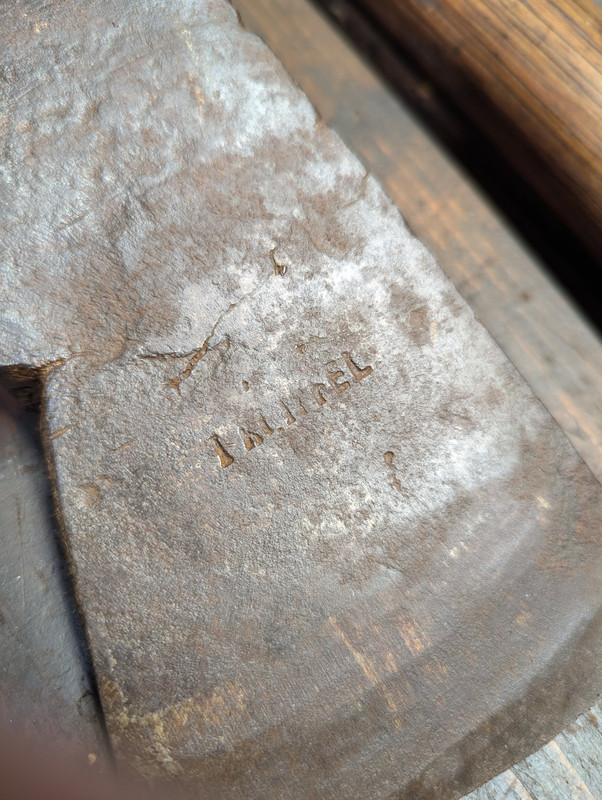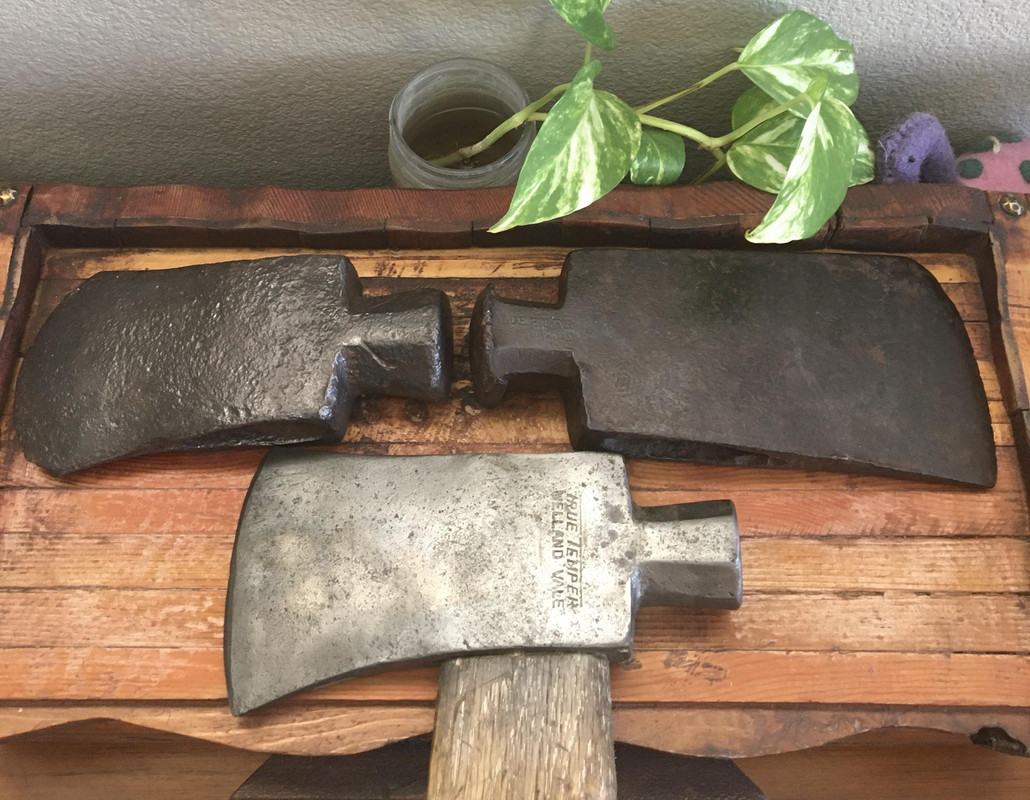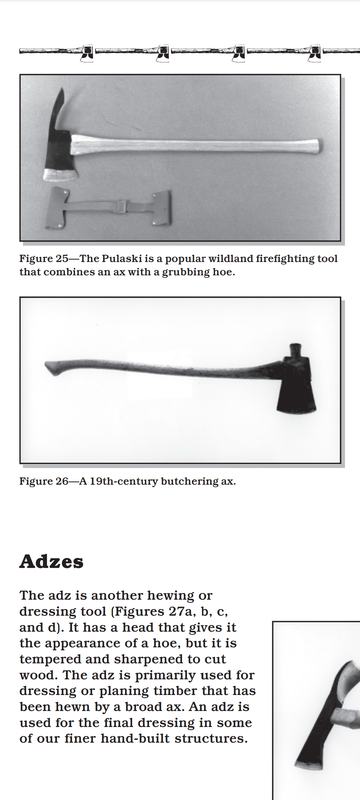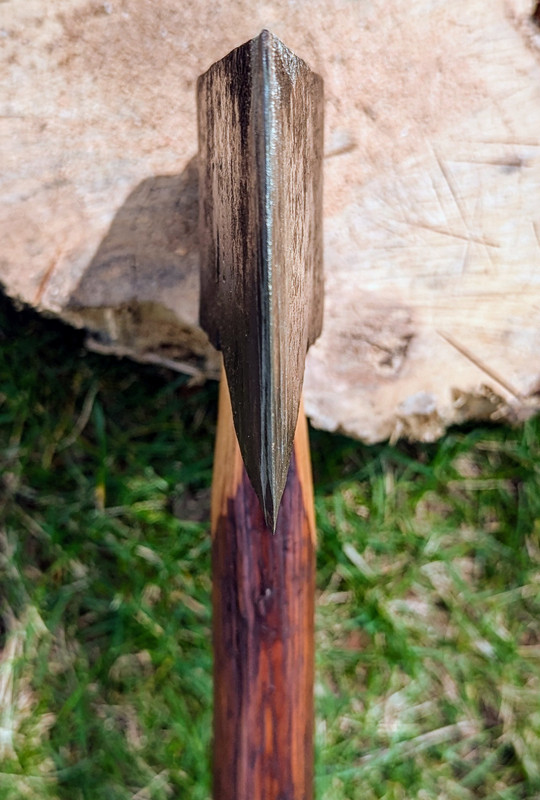Okay. I've done some analysis. Examined under magnification, different lighting and additional cleaning. I think I've got a possible answer on the name.
Firstly, this axe was found in the Quad Cities area on the Illinois side of the Mississippi. If my analysis is correct, it is a German name. There are German settlements not too far away, the Amana Colonies in Iowa being the one that comes to my mind. I'm thinking that just because it is a German/European style axe does not rule out that it was made in America by an immigrant holding on to tradition.
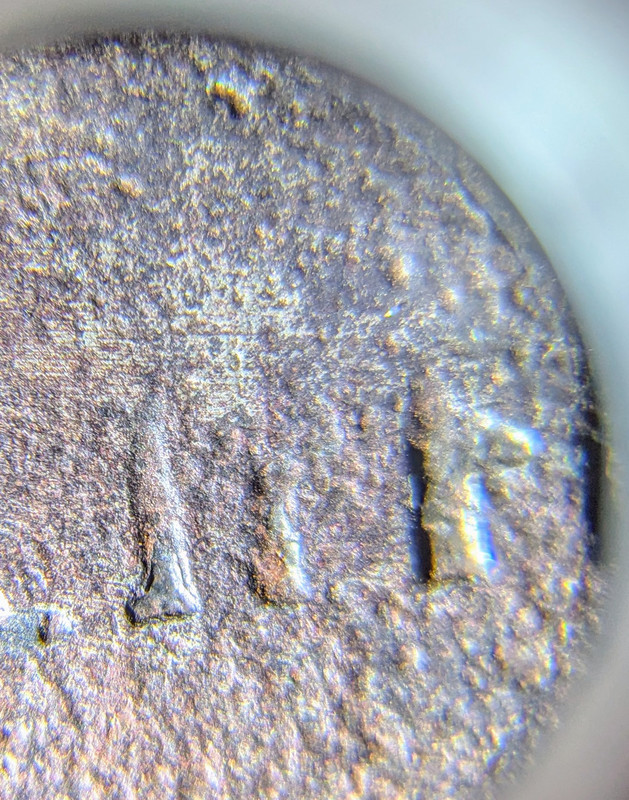
This photo shows the bottom of an I and what I believe is ty of a P

This image shows the remnants of the lower part of an L and the bottom of an I
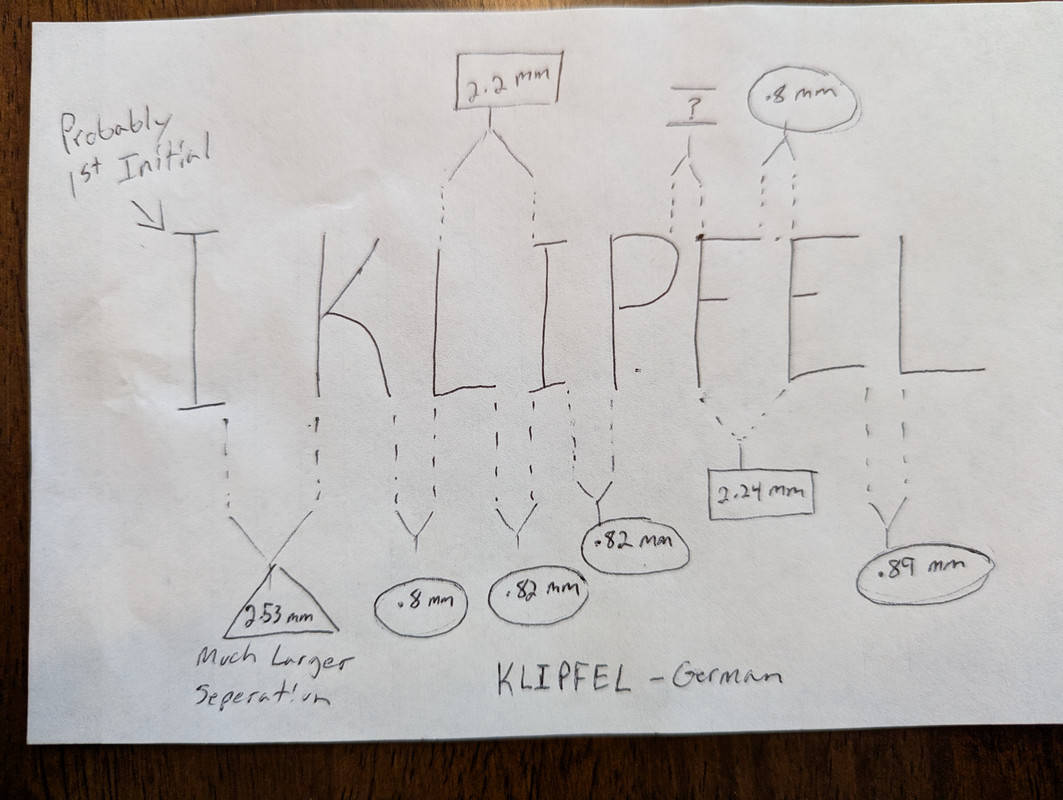
Here is my final analysis on paper. I believe the stamp is
"I KLIPFEL". Klipfel is a documented German name
"German: from Middle High German klüpfel klöpfel klüppel 'mallet cudgel clapper (of a bell)' hence a metonymic occupational name for a maker of cudgels and mallets or clappers for bells or a metonymic occupational name for a butcher a stone-breaker."
Seems like if this person followed in their occupational name, they would have skills related to smithing. Also interesting that the occupation of butcher is described.
The spacing of the letters indicates that the first letter is set apart from the other seven letters and that maybe it is a first initial. The spacing of the last seven letters is all pretty uniform as far as I could tell with a caliper.
I'm far from a Sherlock Holmes, but what do you think??

